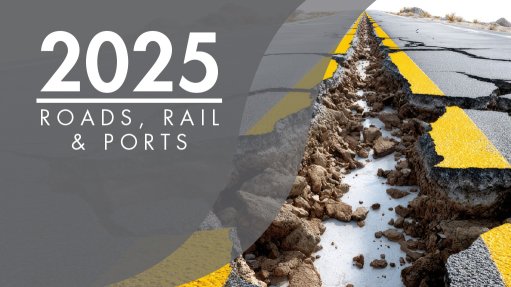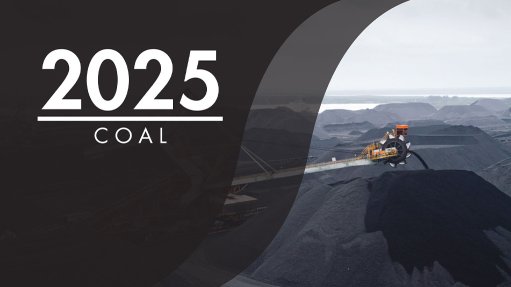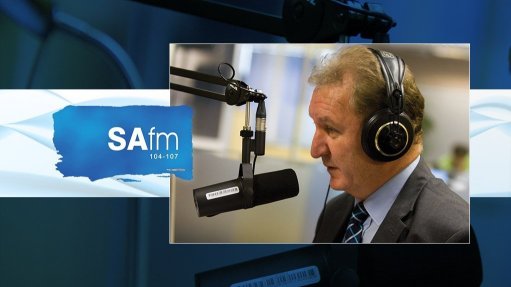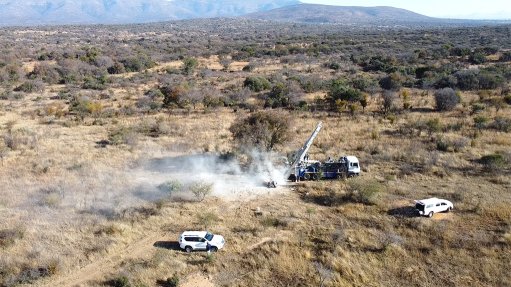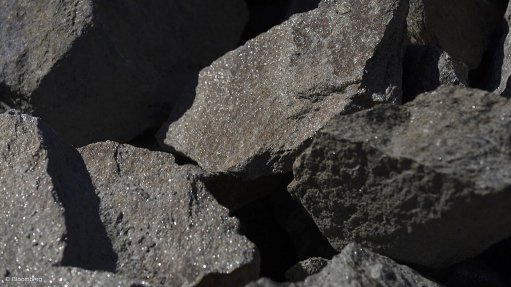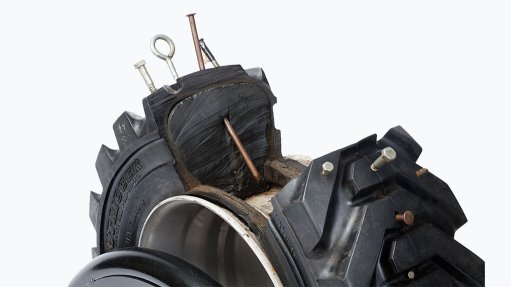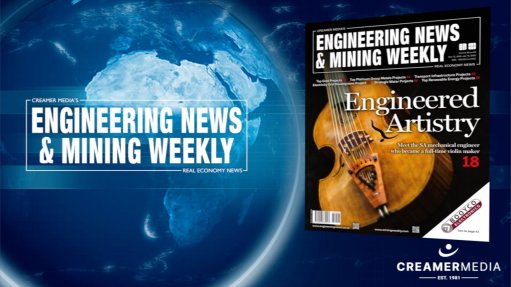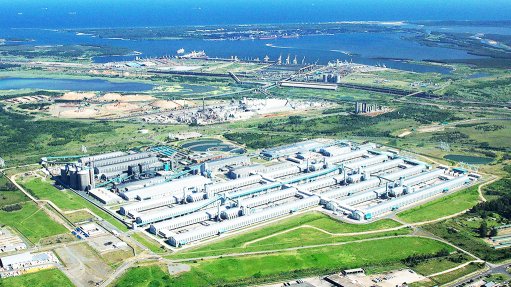South Africa streaks ahead with exceptionally pure rare earth optimised in Joburg lab
JOHANNESBURG (miningweekly.com) – South Africa has delivered what is described as “an exceptionally pure rare earth product”, which has been optimised in a Johannesburg laboratory.
The breakthrough is part of the rare earths recovery project work under way in South Africa, led by Rainbow Rare Earths CEO George Bennett, who on Monday September 1 reported successful results from ongoing testwork for the Phalaborwa project under way in Limpopo province.
This very distinctive project, which has attracted favourable global attention, encompasses the recovery and separation of rare earth elements (REE) from phosphogypsum stacks, a waste product from phosphoric acid production, meaning that many of the costs, risks and long timescales associated with traditional mining projects are eliminated.
Key components of Rainbow’s Johannesburg in-house laboratory testwork have been to maximise and maintain overall REE recovery at 65% while achieving impurity rejection through continuous ion exchange (CIX).
The key delivery of a high-grade, low-impurity feed stream to the final separation process to separate rare earth oxides of the desired purity level has been successfully achieved by Rainbow’s in-house team. The purification process combining CIX and precipitation steps is a novel combination in REE recovery and demonstrates the special intellectual property in REE extraction that the company has developed.
The incorporation of CIX and simplified final separation of only two products is expected to result in modest capital expenditure (capex) and operational expenditure (opex) for this part of the circuit.
At 65%, the recovery of REE from the phosphogypsum feed to the mixed REE product has been in line with recoveries used in the recent interim economic study. These results have been confirmed further through extensive large-scale repetitive batch testing with solution recycle.
Savings in power, reagent, labour and capital costs are expected to be brought about by trade-off studies to optimise the primary leach circuit.
Moreover, the results of trade-off studies will provide the market with an update as to the potential impact on capex and opex ahead of the publication of the project’s definitive feasibility study.
As reported by Mining Weekly last year, Rainbow’s advance is regarded as being one of the world’s most resilient rare earths projects at a time when these elements are in growing demand for use in permanent magnets to help the world go green.
Moreover, the commercial recovery of REEs from phosphogypsum makes Rainbow something of a pioneer.
The potential to become a very low-cost producer of light and heavy REE, and one of the highest margin projects in development globally, is being increasingly recognised.
The West is finally recognising the importance of REE, used in permanent magnets vital to the functionality of many of the products that underpin twenty-first-century society, as well as to emerging and advanced technologies.
A number of recent initiatives by the US, Australian and European governments are aimed at improving the economics of, and supporting the financing for, REE projects to rapidly build out end-to-end rare earth permanent magnet supply chains.
The recent offtake agreement for neodymium and praseodymium (NdPr) between the US Department of Defense and MP Materials utilising a floor price of $110/kg NdPr demonstrated industry acceptance of a floor price significantly above current market pricing required to ensure new sources of supply.
Rainbow calculates that it has a high economic grade of rare earths in the gypsum stacks at Phalaborwa, where the 35-million-tonne resource provides a 16-year life-of-project that will recover four of the world’s most sought after REEs.
Some 150 000 t of these rare earths will be produced at an opex believed to be the lowest of any project in the West and probably even below that of projects in the East.
Low opex and relatively high grade make the project a hardy frontrunner at a time when none of the world’s REE projects are making money at current pricing.
Rainbow’s large pilot plant was built in collaboration with Mintek, South Africa’s Council for Mineral Technology, which derives its mandate from the Minerals Technology Act.
The availability of phosphogypsum is the result of the mining of a hard-rock phosphate deposit, which has been carried out by Foskor for the last 60 years.
The mined material is concentrated through a flotation process into a phosphate slurry, which over the period has been the feed for a nearby phosphoric acid plant, where two key ingredients were added, namely sulphuric acid and heat to create phosphoric acid.
The rare earths in the phosphate slurry were further upgraded in the phosphoric acid sludge in the phosphoric acid plant and then that phosphoric acid production created a gypsum waste residue that was transported in a concentrated form to the gypsum stacks. In conjunction with Mintek, Rainbow has developed a one-of-a-kind flowsheet that enables the commercial extraction of key rare earths out of the phosphogypsum.
Displayed on a large screen during a presentation at Mintek were an old opencast mine that had been mined for many years, an old Sasol phosphoric acid plant that had not been operating for ten years and two unlined environmentally hazardous gypsum stacks.
Rainbow’s project is on its way to clean this up in an environment-friendly manner.
The ready-fenced and power-lined site has a high-voltage switchyard, reflecting the advantages brownfield project development.
Article Enquiry
Email Article
Save Article
Feedback
To advertise email advertising@creamermedia.co.za or click here
Press Office
Announcements
What's On
Subscribe to improve your user experience...
Option 1 (equivalent of R125 a month):
Receive a weekly copy of Creamer Media's Engineering News & Mining Weekly magazine
(print copy for those in South Africa and e-magazine for those outside of South Africa)
Receive daily email newsletters
Access to full search results
Access archive of magazine back copies
Access to Projects in Progress
Access to ONE Research Report of your choice in PDF format
Option 2 (equivalent of R375 a month):
All benefits from Option 1
PLUS
Access to Creamer Media's Research Channel Africa for ALL Research Reports, in PDF format, on various industrial and mining sectors
including Electricity; Water; Energy Transition; Hydrogen; Roads, Rail and Ports; Coal; Gold; Platinum; Battery Metals; etc.
Already a subscriber?
Forgotten your password?
Receive weekly copy of Creamer Media's Engineering News & Mining Weekly magazine (print copy for those in South Africa and e-magazine for those outside of South Africa)
➕
Recieve daily email newsletters
➕
Access to full search results
➕
Access archive of magazine back copies
➕
Access to Projects in Progress
➕
Access to ONE Research Report of your choice in PDF format
RESEARCH CHANNEL AFRICA
R4500 (equivalent of R375 a month)
SUBSCRIBEAll benefits from Option 1
➕
Access to Creamer Media's Research Channel Africa for ALL Research Reports on various industrial and mining sectors, in PDF format, including on:
Electricity
➕
Water
➕
Energy Transition
➕
Hydrogen
➕
Roads, Rail and Ports
➕
Coal
➕
Gold
➕
Platinum
➕
Battery Metals
➕
etc.
Receive all benefits from Option 1 or Option 2 delivered to numerous people at your company
➕
Multiple User names and Passwords for simultaneous log-ins
➕
Intranet integration access to all in your organisation







